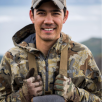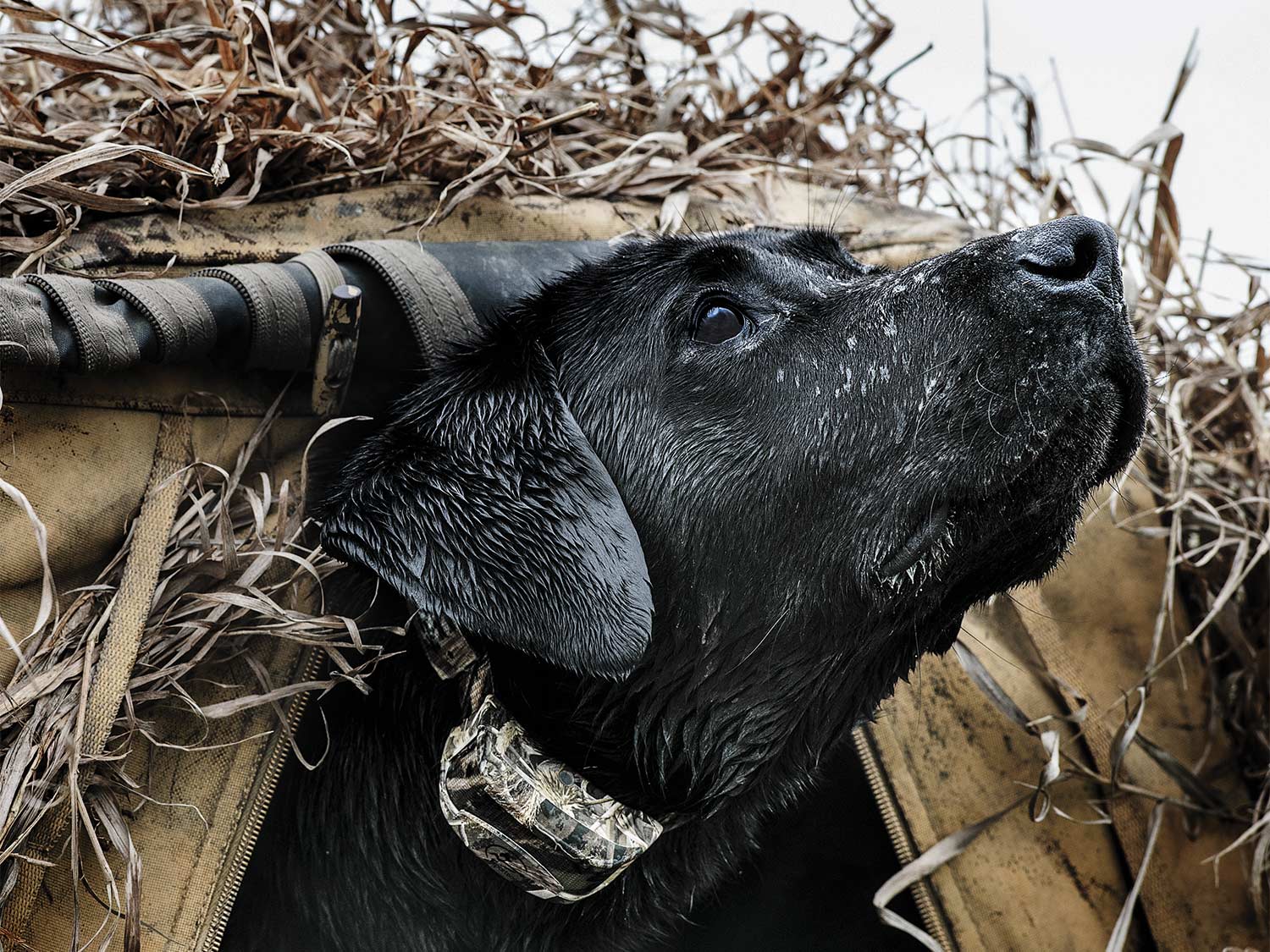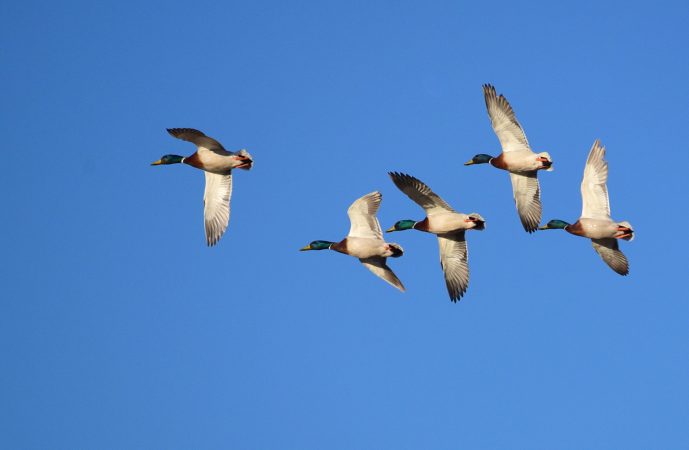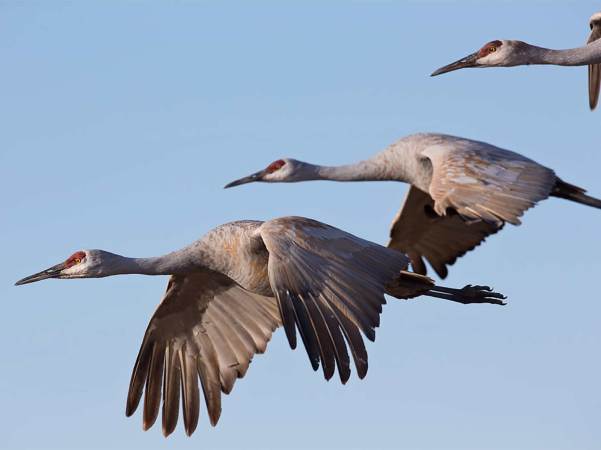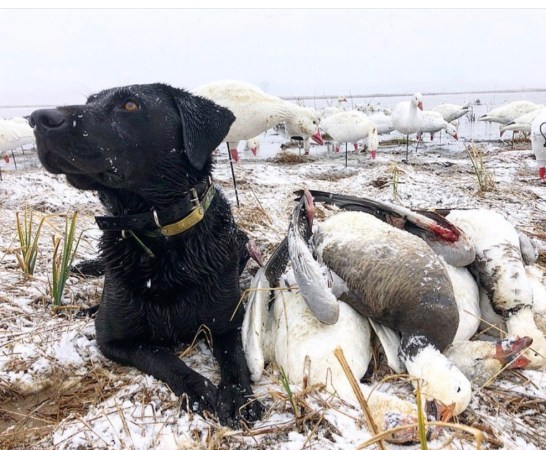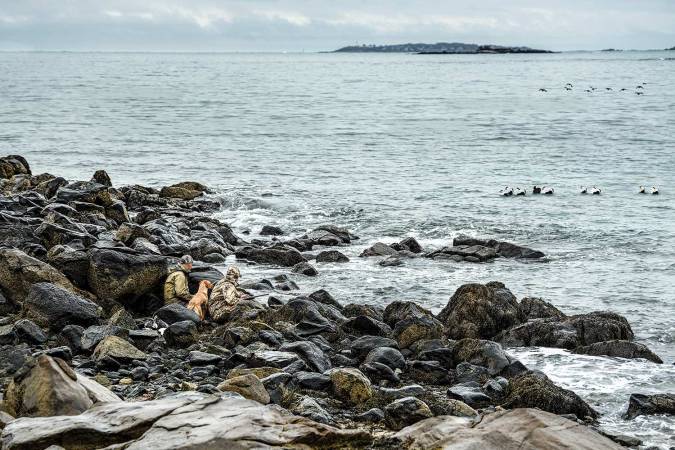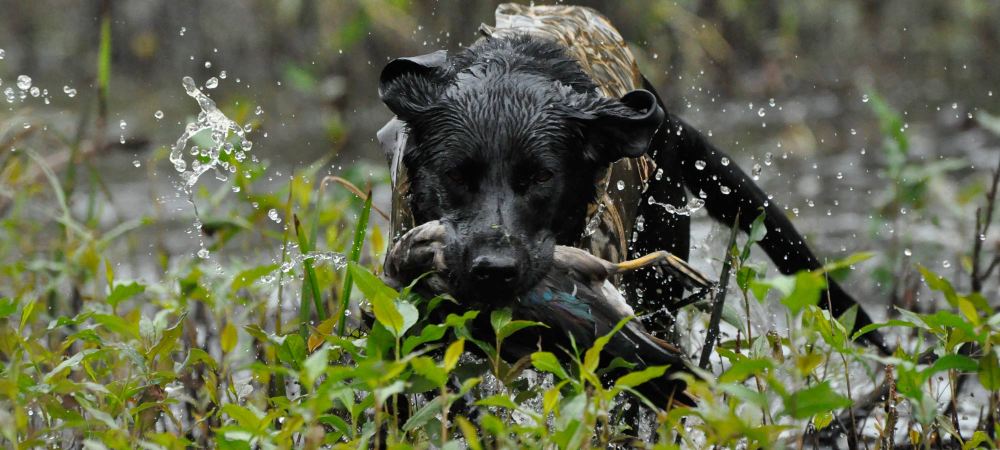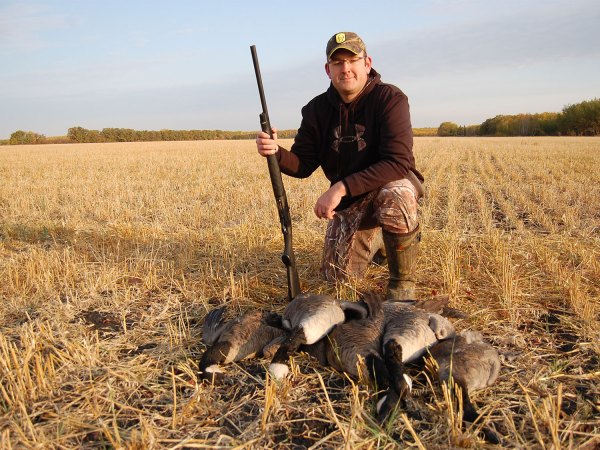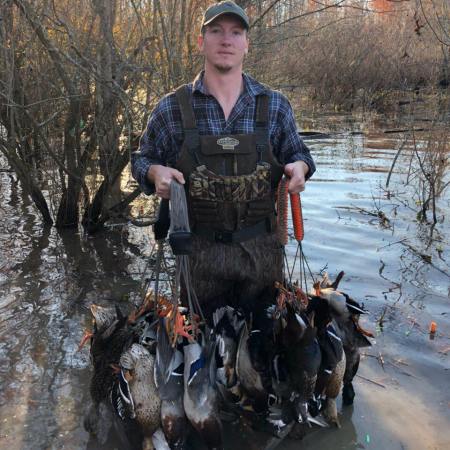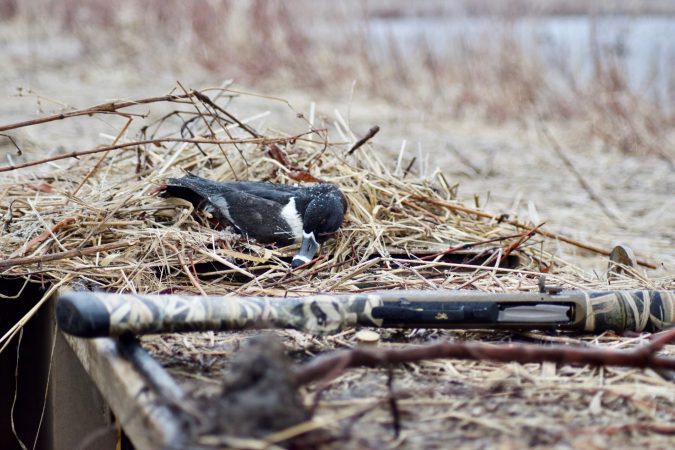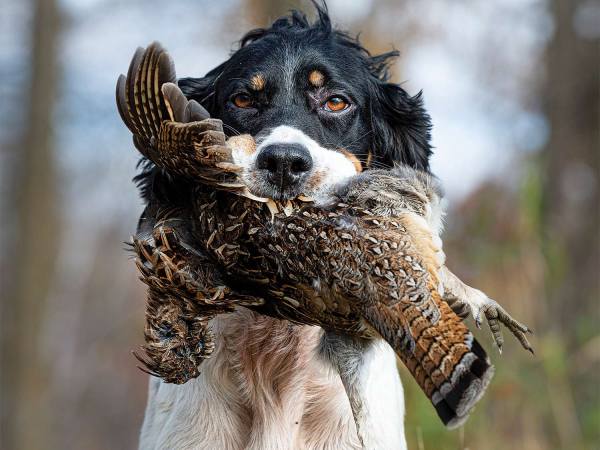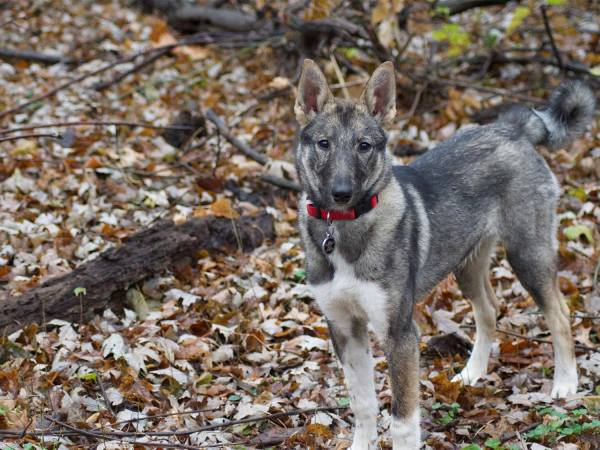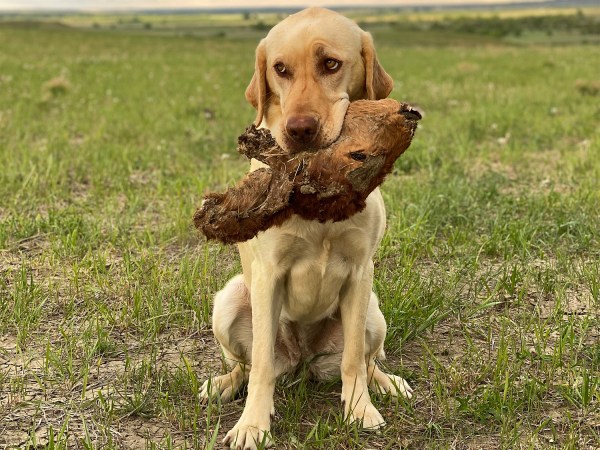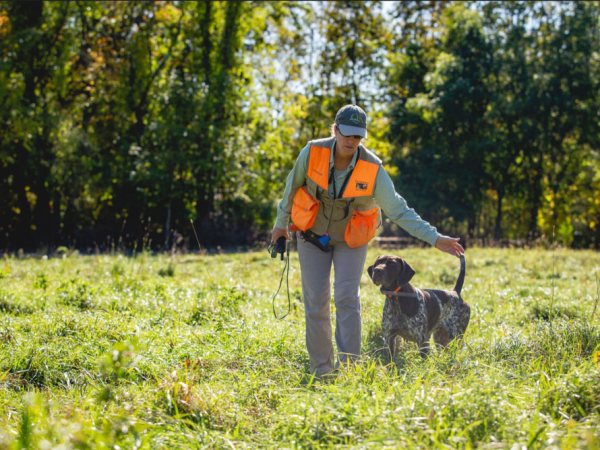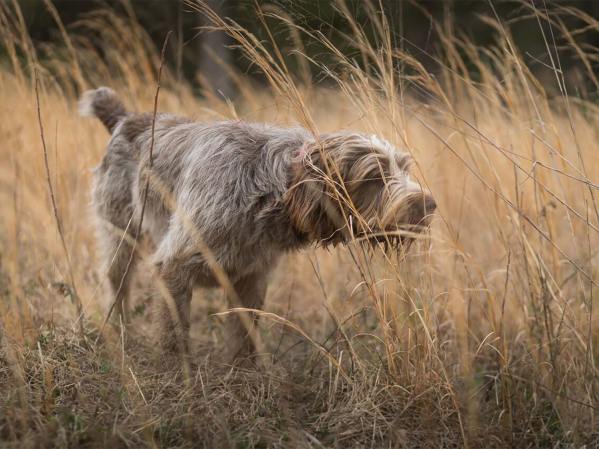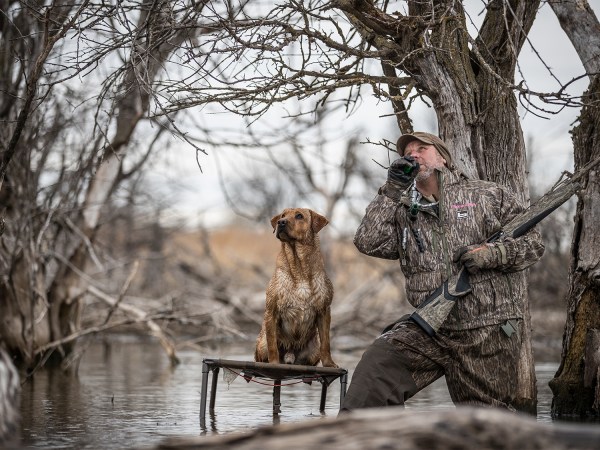We decided to name our bird dog after an elevator company. This was before we even had a dog, when my girlfriend (now my wife) and I were living in New York City.
“Otis,” she said, reading the company name above the floor numbers. “That would be a nice name for a dog.”
“Someday we’ll leave this damn city,” I said. “We’ll get a little black Lab puppy, and we’ll name him Otis.”
Talking about an imagined future was our way of fast-forwarding through the present. I had been diagnosed with cancer the week before, and my immediate future was full of nothing but medical tests, operations, and grim uncertainty.
Much of that fantasy life revolved around the hunting dog we would name Otis. Steph imagined a cute furball she could love and who would love her back. The pup would rely on her for every basic need—a not-so-subtle surrogate for the baby she wanted but wasn’t ready for. I imagined a tireless hunting partner I could take on any adventure, no matter how unlikely the odds of success—an obvious substitute for the close hunting buddy I never found in the city.
So we built the gateway to our future around the idea of a black Lab puppy. And it’s true that a hunting dog can be a catalyst for becoming the hunter, and even the person, you hope to someday be. But first, there are rules to be learned. The hunters, trainers, and breeders in the following stories have accumulated mountains of wisdom over lifetimes lived with duck dogs. Their perspectives just might help carry you to your own future retriever.
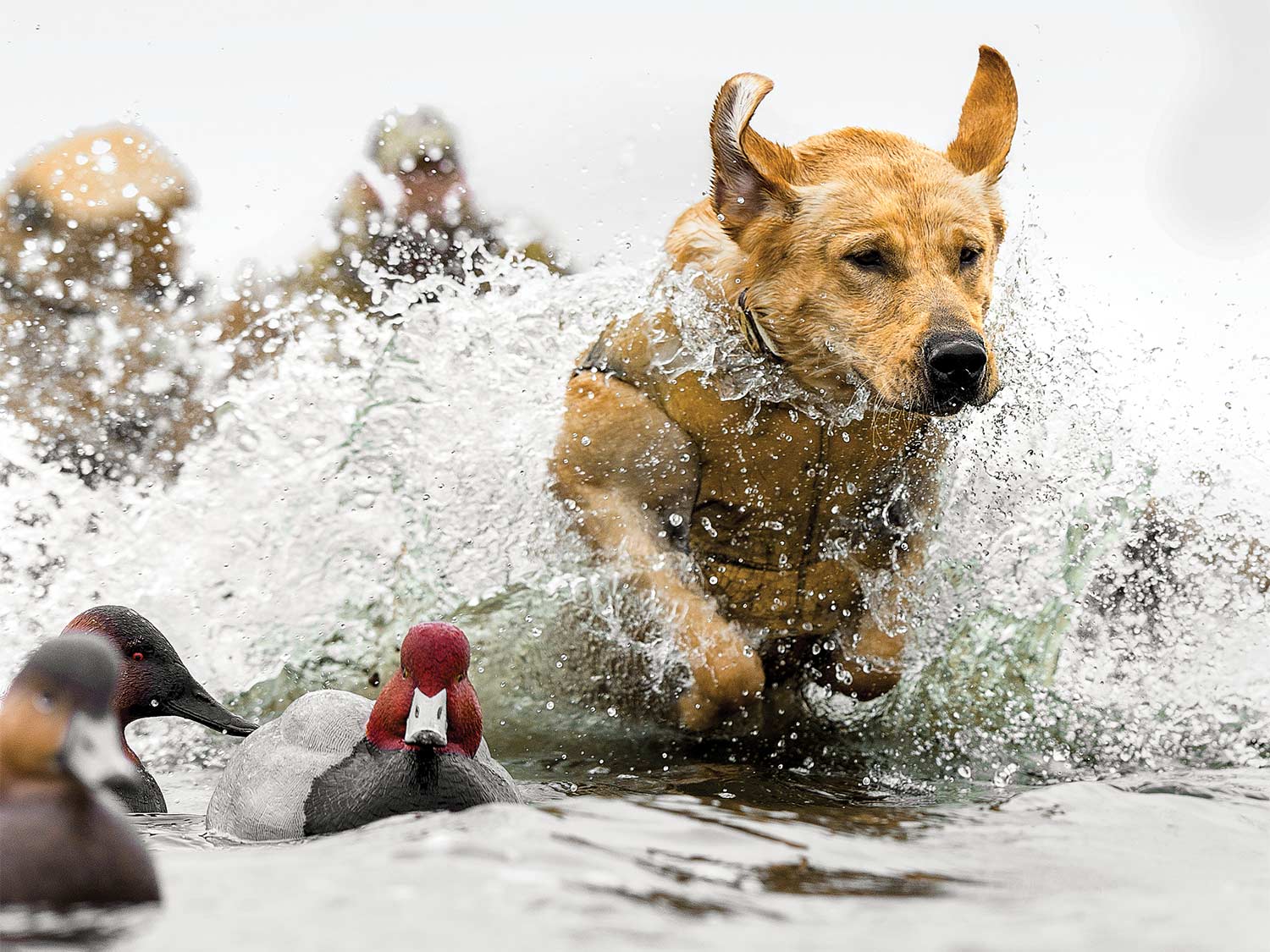
Rule 1. A single retrieve can change your life
Lee Kjos is an iconic photographer in the retriever world. But on that windy morning in Saskatchewan in 1989, he was still a relative nobody, hustling to make it in the corporate world. More important, he was just trying to enjoy a hunt with his aging father.
Kjos and his dad were killing ducks and geese in a dry field when a couple of hunters they didn’t know set up nearby. Eventually, that crew winged a specklebelly goose that sailed some 400 yards out into the field.
“This guy walks out and lines a black Lab. He does a two-whistle blind retrieve at 400 yards, and his dog gets the bird,” Kjos says. He and his dad had never seen anything like it—they were awestruck. “My dad just said, ‘God dang. Go ask that guy if he wants a cup of coffee.’ ”
The dog handler accepted a hot pour from Kjos’ thermos and told them all about field trial competitions and the true capabilities of a well-trained retriever. Years later, the trainer helped Kjos get his first retriever, a yellow Lab he named Sackett. That mischievous pup grew into a beast of a duck dog, who always saved his best efforts for the coldest, nastiest conditions. Imagine impossibly long retrieves on crippled divers in the frigid, roiling waters of Minnesota in November. That was Sackett.
Kjos started photographing Sackett in action, and his love for that dog burned hot in his images. He eventually caught the eye of an art director at Cabela’s, and his career skyrocketed.
“If I’m known for one thing, it’s the gritty, action photos,” Kjos says. “Well, that’s because that’s exactly what Sackett was as a duck dog. My whole style and look? That comes from him.”
That windy hunt in Saskatchewan turned out to be one of his dad’s last hunting trips, but the legacy of that morning lives on in Kjos’ passion for duck dogs.
“It’s funny,” Kjos says. “My dad used to say, ‘There’re two things that every kid needs. One is a garden, and one is a dog. They’ll both teach you what you need to know about life.’ Dads say stuff like that, but when you’re young, you don’t get it. Well, I get it now.”
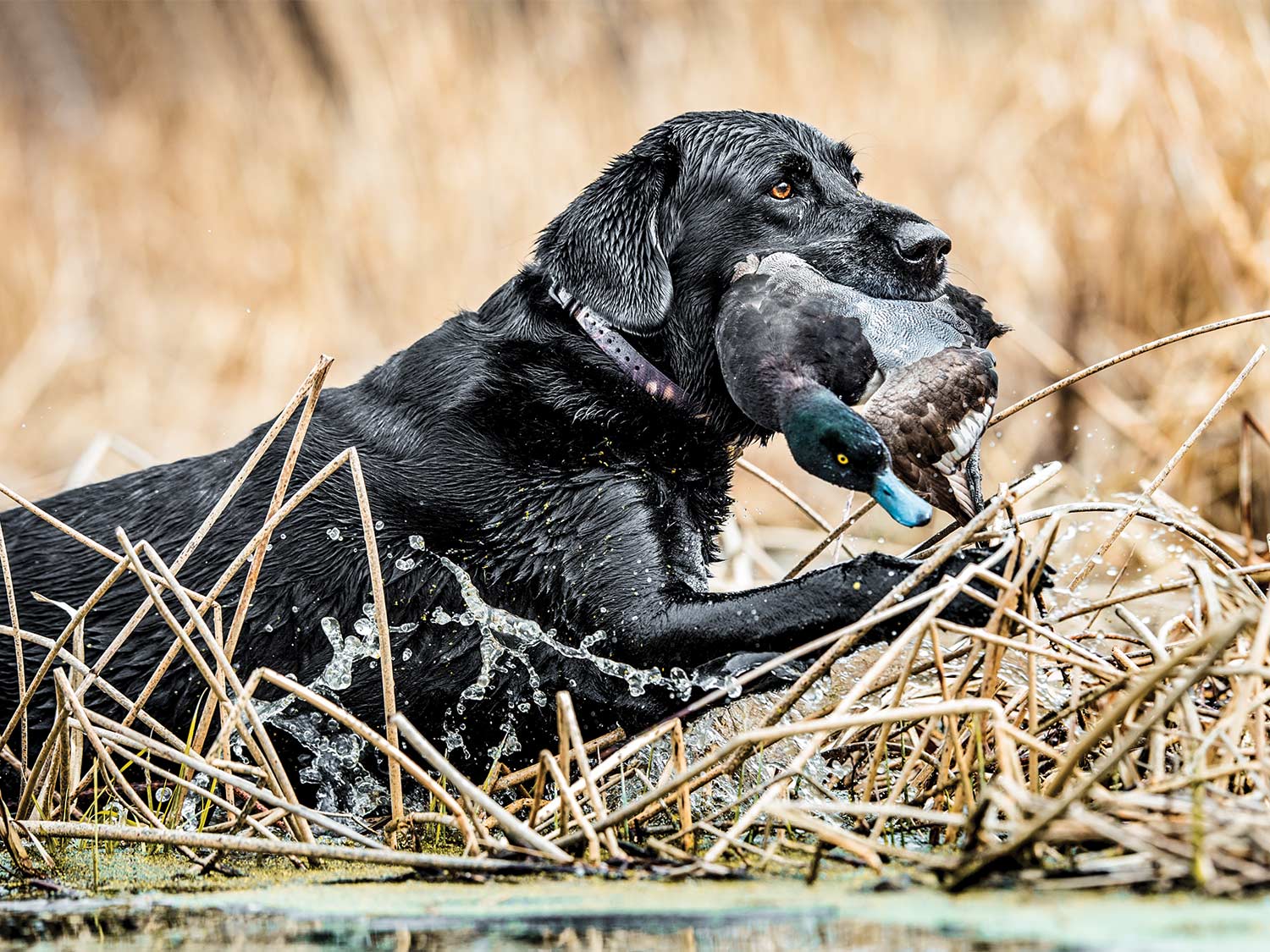
Rule 2. He’s more than just a dog
“If it feels like your hunting dog knows what you’re thinking, he probably does. And it’s probably tied to his breeding,” says Josh Miller, a young-gun dog breeder and Eukanuba Pro Trainer. Years ago, Miller dove deep into the rabbit hole of Labrador breeding and the issues he noticed among different bloodlines.
“I would see behavior problems in training, like constant whining, and I believed they had to do with breeding,” Miller says.
His investigation took him to a hunt test in Scotland, where he got to see a field of British Labs compete. In most U.S. hunting circles, British Labs were known to be short and stocky, with little hunting drive.
“My perception was that the American Lab was like the Tasmanian Devil. British Labs were like Eeyore,” Miller says. “But what I saw through the course of the day was incredible. These dogs were powerful and hard-charging. Big blind retrieves on multiple birds. It was not what I was expecting at all.”
After the hunt test, Miller went to the inn where all the Lab owners were staying, and he saw the retrievers lounging beneath their owners’ barstools. They were chilling out while the trainers joked and drank and told stories.
“It hit me at that moment that this is what hunters in the U.S. really want in a dog,” Miller says.
Eventually Miller started his own meticulous breeding program with British Labs. His goal is the same as many of today’s retriever breeders: to turn out dogs that are hard hunters but also have personality and character. In other words, he doesn’t want muscled-up, mindless hunting machines. His dogs are intelligent, intuitive, and even thoughtful. When you sign up to buy a dog, Miller’s wife actually picks the puppy for you. Since she spends the most time with the litters, she selects the pup that’s most suited to your needs and personality—like matchmaking for dog owners.
“Back in the day, there was the term ‘2×4 dogs.’ You could hit them on the head with a 2×4 and it wouldn’t faze them,” Miller says. “But now breeders are breeding for softer temperaments and more personality. We’re breeding for more than just a hunting dog.”
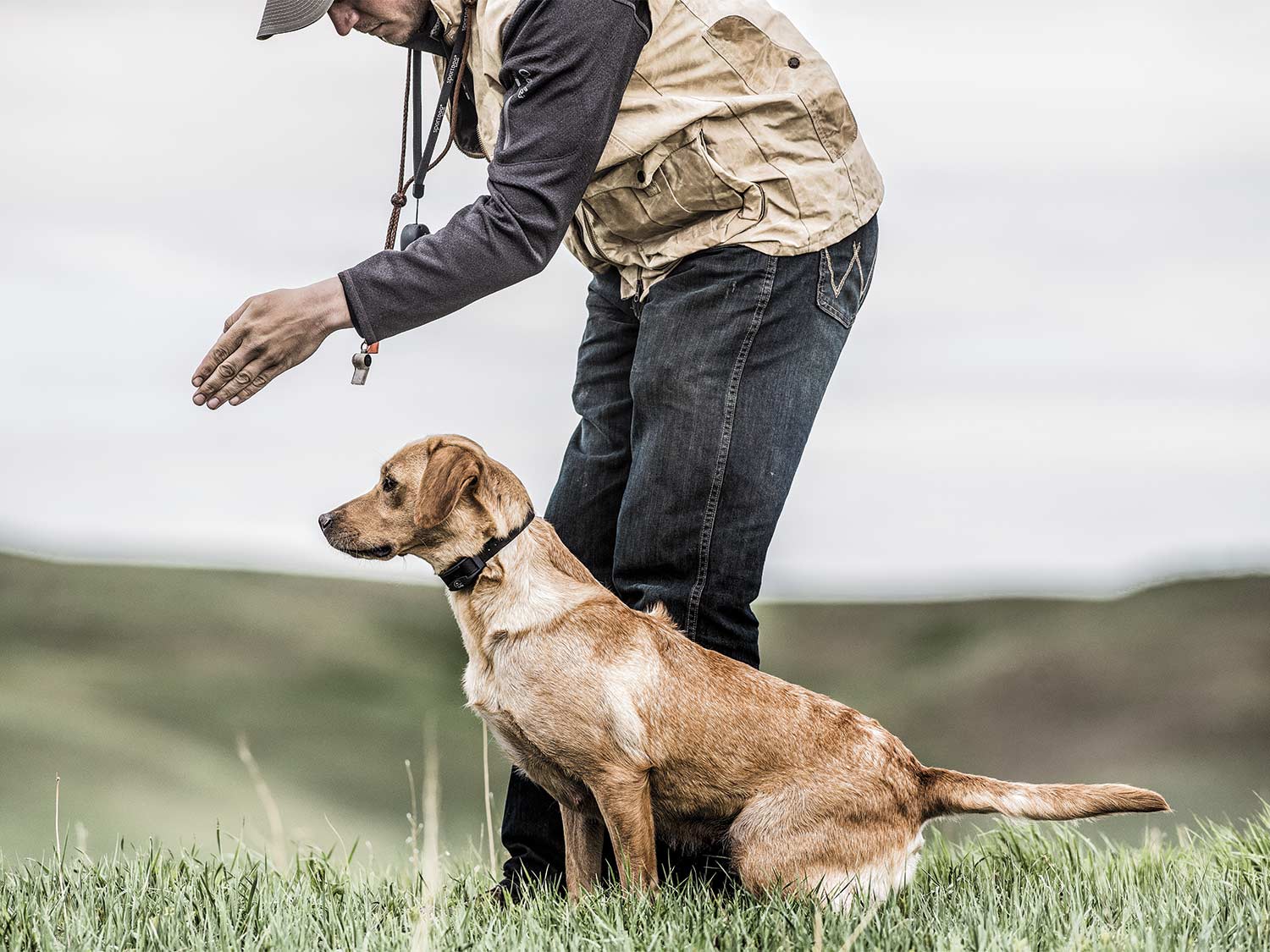
Rule 3. Every day is training day
When legendary trainer and Purina pro Tom Dokken got into the retriever game almost 50 years ago, training hunting dogs was all about toughness. Common knowledge dictated that allowing a dog to live in the house would make him too soft. It would ruin his nose. Trainers did essentially zero work with a retriever until he was at least a year old.
“The dogs would sit in the kennel for a year,” he says. “Then I’d get them, and training would be like wrestling alligators all day.”
Retriever training has come a long, long way. Now our hunting dogs live with us indoors and become part of the family (some of the crustiest old duck hunters let their dogs sleep on the bed). All of this makes for dogs that are bonded more closely to their owners, better socially conditioned, and more receptive to training as puppies, Dokken says. But that closeness with our dogs also makes it more important than ever for you, the owner, to be consistent, fair, and levelheaded.
Every moment the pup is around you, he’s watching, reading signals, and observing your body language. If you’re sporadic with basic obedience, moody with your commands, and short-tempered with corrections, your dog will get confused, according to Dokken. This can happen in the field, but also in the backyard and even in the living room. Most novice dog handlers misinterpret their dog’s confusion as obstinance, and then more poor training ensues.
In short, if you want a better dog, you’ve got to be a better person. That means taking the time to read your dog, and adapt as you work together. And having the self-discipline to be consistent.
“When you start out, you’re just not going to have it, because of your lack of knowledge and your excitement to push the dog through quickly,” Dokken says. “Take your time. Have patience. These things have to be learned.”
Read Next: Are Hunting Dogs Better When Kept Indoors or Outdoors?
Rule 4. Your dog will make you a better hunter
A black Lab named Ruff represented everything that pro waterfowler Tony Vandemore loves about duck hunting: the desire to hunt day after day, killer instincts to find impossible birds, and a deep loyalty to his hunting buddies.
When Ruff was a year old, he let out a yip while retrieving ducks from a little waterhole in the timber. After Ruff had brought back all the ducks, Vandemore noticed a hole in the dog’s side, just behind his shoulder. He had charged full speed into a beaver snag.
“It looked like someone had shot him with a broadhead,” Vandemore says. “I thought he was going to die.”
But Ruff survived—the puncture wound had missed his vitals by inches—and went on to have a legendary hunting career. Vandemore was getting his hunting lodge, Habitat Flats, off the ground, and Ruff was one of the only dogs in the rotation. They hunted nonstop from early teal season through the spring snow goose season, year after year. Ruff picked up more than 25,000 birds. He hunted certain holes so often that he knew exactly where wounded ducks would try to escape to. He was gray-muzzled and fully deaf, and he had failing hips when he picked up his last bird at 13 years old—a drake mallard in the decoys on a warm October day. Shortly after, Vandemore had to put Ruff down.
“What’s so cool about a hunting dog, a real meat dog, is they can be going out every single day and they can be beat down and so tired it’s unbelievable. But I guarantee you, before your alarm goes off the next day, he’s going to be up licking your face saying, ‘Let’s go.’ They can be tired, they can even be hurt, but they’ll always want to go.”
You might never become a diehard duck slayer like Vandemore—most are not cut out for that lifestyle—but it doesn’t matter. Your dog is going to be just as important to you as Ruff ever was to Vandemore.
You’ll send him charging through icy waters and see him start each early morning with fresh optimism, because he doesn’t know the birds are stale or the weather sucks. And if you don’t rein him in, he would die trying to bring back just one more bird for you. All this will make you want to be a better hunter for him. It will tighten your shooting and sharpen your scouting. His desire is contagious. And even when his body wears out, his drive never will. You’ll hold tight to the memories, and hope it will be the same for you.
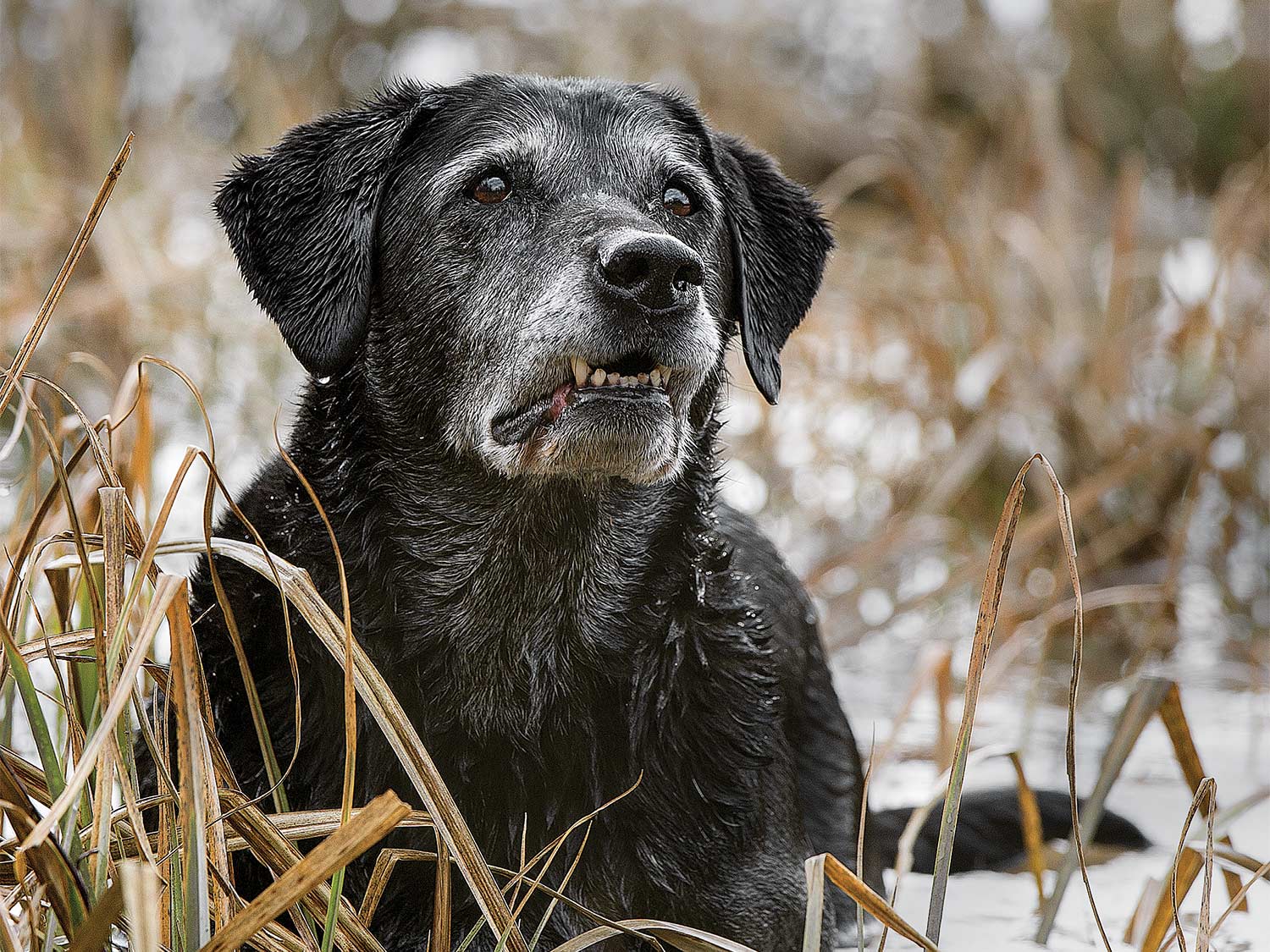
Rule 5. You get the dog you deserve
I ended up surviving my round with cancer—and New York—and wound up with a female pup whose name was inevitable. Otis is a 55-pound sweetheart of a black Lab. At the first duck camp I ever brought her to, our host nicknamed her “Miss Miss.” She’s 5 now, with just a little gray showing on her muzzle, and in the prime of her hunting career. She’s old enough to avoid most rookie mistakes but still young enough to enjoy the hardest hunts. I’m probably in the same place.
It was clear from the start that we’d make good partners; she always wanting to do the right thing, always fearful of getting in trouble, and me not having the heart to be heavy-handed. But it was also clear that I was no Tom Dokken and she would never be trained into a Ruff. Otis does all kinds of things that would drive a pro trainer insane. Like how she whines until she gets her first retrieve of the morning, or how she’s scared of propane heaters and insists on hiding under my legs when they’re running in a blind. Or the time she ripped the head clean off a very big, very alive Canada goose we’d winged, my hunting partner beside me muttering, “Oh God,” in horror.
I know many of Otis’ faults come from my own mistakes in her training. So now when I look ahead, it’s with a practical eye to the near future—the little things to correct for next season, but also different spots to hunt and new species to chase. And if I’m being totally honest, I don’t care that Otis isn’t a perfectly finished hunting dog. I wouldn’t trade her for five Ruffs. When I think forward to this duck season opener—the woodies whistling by at sunrise, volleys of gunfire followed by plenty of heckling—I can also hear Otis whining quietly by my side.
